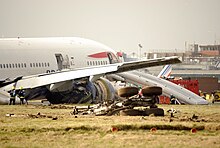
In the United States, community emergency response team (CERT) can refer to

In medicine, triage is a process by which care providers such as medical professionals and those with first aid knowledge determine the order of priority for providing treatment to injured individuals and/or inform the rationing of limited supplies so that they go to those who can most benefit from it. Triage is usually relied upon when there are more injured individuals than available care providers, or when there are more injured individuals than supplies to treat them.

Emergency medical services (EMS), also known as ambulance services or paramedic services, are emergency services that provide urgent pre-hospital treatment and stabilisation for serious illness and injuries and transport to definitive care. They may also be known as a first aid squad, FAST squad, emergency squad, ambulance squad, ambulance corps, life squad or by other initialisms such as EMAS or EMARS.

Federal Emergency Management Agency (FEMA) is an agency of the United States Department of Homeland Security (DHS), initially created under President Jimmy Carter by Presidential Reorganization Plan No. 3 of 1978 and implemented by two Executive Orders on April 1, 1979. The agency's primary purpose is to coordinate the response to a disaster that has occurred in the United States and that overwhelms the resources of local and state authorities. The governor of the state in which the disaster occurs must declare a state of emergency and formally request from the President that FEMA and the federal government respond to the disaster. The only exception to the state's gubernatorial declaration requirement occurs when an emergency or disaster takes place on federal property or to a federal asset—for example, the 1995 bombing of the Alfred P. Murrah Federal Building in Oklahoma City, Oklahoma, or the Space Shuttle Columbia in the 2003 return-flight disaster.
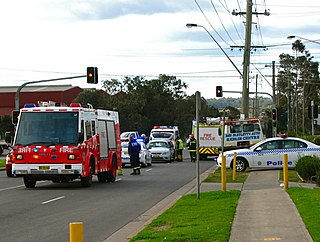
Emergency services and rescue services are organizations that ensure public safety, security, and health by addressing and resolving different emergencies. Some of these agencies exist solely for addressing certain types of emergencies, while others deal with ad hoc emergencies as part of their normal responsibilities. Many of these agencies engage in community awareness and prevention programs to help the public avoid, detect, and report emergencies effectively. Emergency services are often considered first responders, and typically have dedicated emergency vehicles.

A first responder is a person with specialized training who is among the first to arrive and provide assistance or incident resolution at the scene of an emergency. First responders typically include law enforcement officers, paramedics, emergency medical technicians, and firefighters. In some jurisdictions, emergency department personnel, such as doctors and nurses, are also required to respond to disasters and critical situations, designating them first responders; in other jurisdictions, military and security forces may also be authorized to act as first responders.

The Incident Command System (ICS) is a standardized approach to the command, control, and coordination of emergency response providing a common hierarchy within which responders from multiple agencies can be effective.

Emergency management or disaster management is a science and a system charged with creating the framework within which communities reduce vulnerability to hazards and cope with disasters. Emergency management, despite its name, does not actually focus on the management of emergencies, which can be understood as minor events with limited impacts and are managed through the day-to-day functions of a community. Instead, emergency management focuses on the management of disasters, which are events that produce more impacts than a community can handle on its own. The management of disasters tends to require some combination of activity from individuals and households, organizations, local, and/or higher levels of government. Although many different terminologies exist globally, the activities of emergency management can be generally categorized into preparedness, response, mitigation, and recovery, although other terms such as disaster risk reduction and prevention are also common. The outcome of emergency management is to prevent disasters and where this is not possible, to reduce their harmful impacts.

Disaster response refers to the actions taken directly before, during or in the immediate aftermath of a disaster. The objective is to save lives, ensure health and safety and to meet the subsistence needs of the people affected. This includes warning/evacuation, search and rescue, providing immediate assistance, assessing damage, continuing assistance and the immediate restoration or construction of infrastructure. The aim of emergency response is to provide immediate assistance to maintain life, improve health and support the morale of the affected population. Such assistance may range from providing specific but limited aid, such as assisting refugees with transport, temporary shelter, and food to establishing semi-permanent settlements in camps and other locations. It also may involve initial repairs to damage or diversion to infrastructure.
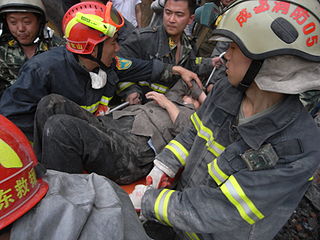
Urban search and rescue is a type of technical rescue operation that involves the location, extrication, and initial medical stabilization of victims trapped in an urban area, namely structural collapse due to natural disasters, war, terrorism or accidents, mines and collapsed trenches.

Emergency service response codes are predefined systems used by emergency services to describe the priority and response assigned to calls for service. Response codes vary from country to country, jurisdiction to jurisdiction, and even agency to agency, with different methods used to categorize responses to reported events.
Winnipeg Fire Paramedic Service (WFPS) provides fire and EMS services to the City of Winnipeg, Manitoba. It operates from 27 fire stations, and 3 administration offices across the city.

Emergency medical services in France are provided by a mix of organizations under public health control. The central organizations that provide these services are known as a SAMU, which stands for Service d’aide médicale urgente. Local SAMU organisations operate the control rooms that answer emergency calls and dispatch medical responders. They also operate the SMUR, which refers to the ambulances and response vehicles that provide advanced medical care. Other ambulances and response vehicles are provided by the fire services and private ambulance services.
Emergency Medical Service in Germany is a service of public pre-hospital emergency healthcare, including ambulance service, provided by individual German cities and counties. It is primarily financed by the German public health insurance system.
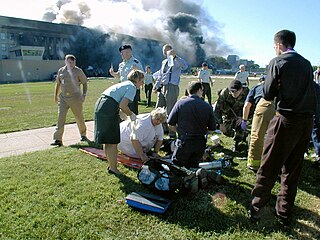
Disaster medicine is the area of medical specialization serving the dual areas of providing health care to disaster survivors and providing medically related disaster preparation, disaster planning, disaster response and disaster recovery leadership throughout the disaster life cycle. Disaster medicine specialists provide insight, guidance and expertise on the principles and practice of medicine both in the disaster impact area and healthcare evacuation receiving facilities to emergency management professionals, hospitals, healthcare facilities, communities and governments. The disaster medicine specialist is the liaison between and partner to the medical contingency planner, the emergency management professional, the incident command system, government and policy makers.
Emergency medical services in Australia are provided by state ambulance services, which are a division of each state or territorial government, and by St John Ambulance in both Western Australia and the Northern Territory.
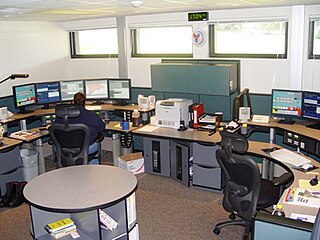
An emergency medical dispatcher is a professional telecommunicator, tasked with the gathering of information related to medical emergencies, the provision of assistance and instructions by voice, prior to the arrival of emergency medical services (EMS), and the dispatching and support of EMS resources responding to an emergency call. The term "emergency medical dispatcher" is also a certification level and a professional designation, certified through the Association of Public-Safety Communications Officials-International (APCO) and the International Academies of Emergency Dispatch. Many dispatchers, whether certified or not, will dispatch using a standard emergency medical dispatch protocol.
In Ukraine, emergency medical services are provided by the Ukrainian Emergency Medical Services (UEMS), a special type of government rescue service, the main task of which is to provide free of charge medical assistance to victims, rescuers and any other persons who take part in the response to and/or recovery process after incidents of any kind.

A mass casualty incident describes an incident in which emergency medical services resources, such as personnel and equipment, are overwhelmed by the number and severity of casualties. For example, an incident where a two-person crew is responding to a motor vehicle collision with three severely injured people could be considered a mass casualty incident. The general public more commonly recognizes events such as building collapses, train and bus collisions, plane crashes, earthquakes and other large-scale emergencies as mass casualty incidents. Events such as the Oklahoma City bombing in 1995, the September 11 attacks in 2001, and the Boston Marathon bombing in 2013 are well-publicized examples of mass casualty incidents. The most common types of MCIs are generally caused by terrorism, mass-transportation accidents, fires or natural disasters. A multiple casualty incident is one in which there are multiple casualties. The key difference from a mass casualty incident is that in a multiple casualty incident the resources available are sufficient to manage the needs of the victims. The issue of resource availability is therefore critical to the understanding of these concepts. One crosses over from a multiple to a mass casualty incident when resources are exceeded and the systems are overwhelmed.
Emergency Medical Dispatch (EMD) refers to a system that enhances services provided by Public Safety Answering Point (emergency) call takers, such as municipal emergency services dispatchers. It does so by allowing the call taker to quickly narrow down the caller's type of medical or trauma situation, so as to better dispatch emergency services, and provide quality instruction to the caller before help arrives.

